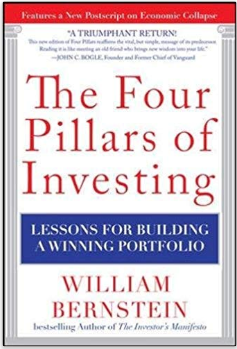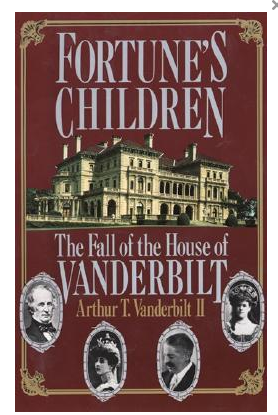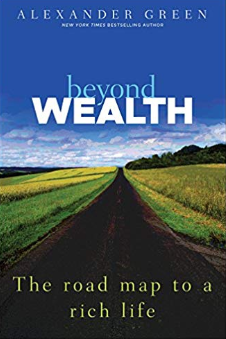The 4 Disciplines of Execution by Chrise McChesne, Sean Covey & Jim Huling
![The 4 Disciplines of Execution: Achieving Your Wildly Important Goals by [McChesney, Chris, Covey, Sean, Huling, Jim]](https://images-na.ssl-images-amazon.com/images/I/51bPo7JE5-L.jpg) Wow – this book is fantastic! This ranks up there in my top five favorite business books. This book gives real world examples of how companies have implemented these concepts for amazing results for their employee teams and their customers.
Wow – this book is fantastic! This ranks up there in my top five favorite business books. This book gives real world examples of how companies have implemented these concepts for amazing results for their employee teams and their customers.
It talks about how we all get swept up in the daily “whirlwind” of immediate priorities in business and as a result we are just in survival mode rather than flourish mode. You react to the whirlwind that ACTS on you but YOU act on Goals which is where the real results are.
The purpose of the book is to show you how to identify your Wildly Important Goals (WIGS), develop your lag measurements for them (management scorecard), the lead measurements that drive the lags (employee team score) and how to ensure accountability through a regular cadence of brief review and commitment sessions (execution). Its simple for all to understand and gets everyone engaged because when you keep score for things people can impact you get results!
This book is a fantastic read. You can get this book on Amazon » or at your local library.
 I enjoyed this book. John Bogle provides some great insight on investing and business overall. He talks about doing what is proper and right in business and the profits will follow. He also has the saying “press on – regardless” as a motto that has helped him over the years when times were tough.
I enjoyed this book. John Bogle provides some great insight on investing and business overall. He talks about doing what is proper and right in business and the profits will follow. He also has the saying “press on – regardless” as a motto that has helped him over the years when times were tough.
He explains that money is a tool to get you were you want to go but is definitely not the goal. He challenges the 4% rule that many use in the financial community as a way to determine the amount of money you need to retire. He discusses the pendulum of US vs international investments which is important to understand.
This book is a good read. You can get this book on Amazon » or at your local library.
The Slight Edge by Jeff Olson
 I really enjoyed this book. There are some great lessons in this one. I highly recommend it. It presents some basic and logical concepts that are available for all of us to use, yet according to the author only 5% achieve the success they hope for. The other 95% fall short. Mr. Olson goes on to explain that the difference is the “slight edge.”
I really enjoyed this book. There are some great lessons in this one. I highly recommend it. It presents some basic and logical concepts that are available for all of us to use, yet according to the author only 5% achieve the success they hope for. The other 95% fall short. Mr. Olson goes on to explain that the difference is the “slight edge.”
He discusses how people often bail before they become successful as they don’t see the benefits of their effort in the short run. He explains that just a 1% improvement done incrementally over time adds up to amazing results. He has a really good chart that shows how you can’t tell you are making progress and then all of a sudden you appear to see dramatic results, which is where all your efforts hit critical mass.
He explains how people on the failure curve tend to focus on the past and it pulls them down whereas people on the success curve focus on their future and it pulls them up.
This book is a good read. You can get this book on Amazon » or at your local library.
The Rhythm of Life by Matthew Kelley
 The purpose of this book appears to be to help you find happiness and understanding of the real value in life. The author clearly explains that our society tells us that stuff will make us happy but we all realize that it is really not the case, yet many of us don’t do anything about it. He reminds us that life is a journey and the real joy is in embracing the journey rather than racing to get to the finish line. He tells us that the happiest people are focused on personal relationships, not running around being busy all the time. We all have our own genius, and part of the journey of life is to find your genius. He describes how each of us are truly unique and that we should never “wear masks” by abandoning ourselves and doing or saying things to please others at the expense of our true beliefs. He tells us that we are in an evolving state of different versions of ourselves, and that one of the challenges is to continue to work toward being the best version of ourselves as God would want from us and we would want from ourselves.
The purpose of this book appears to be to help you find happiness and understanding of the real value in life. The author clearly explains that our society tells us that stuff will make us happy but we all realize that it is really not the case, yet many of us don’t do anything about it. He reminds us that life is a journey and the real joy is in embracing the journey rather than racing to get to the finish line. He tells us that the happiest people are focused on personal relationships, not running around being busy all the time. We all have our own genius, and part of the journey of life is to find your genius. He describes how each of us are truly unique and that we should never “wear masks” by abandoning ourselves and doing or saying things to please others at the expense of our true beliefs. He tells us that we are in an evolving state of different versions of ourselves, and that one of the challenges is to continue to work toward being the best version of ourselves as God would want from us and we would want from ourselves.
I found profound meaning in the book with fantastic reminders of the important things in life. You can get the book on Amazon » or at your local library.
The Four Pillars of Investing by William Bernstein
 This book has some good sound investment advice that allows you to step back and see the big picture. For example, the author’s stock market rule that high current performance is followed by low future performance and low current performance is followed by high future performance is a good reminder that average market returns over time are the result of highs and lows. Also that the market, which is the result of the collective minds of many, will always be smarter that you are as one individual.
This book has some good sound investment advice that allows you to step back and see the big picture. For example, the author’s stock market rule that high current performance is followed by low future performance and low current performance is followed by high future performance is a good reminder that average market returns over time are the result of highs and lows. Also that the market, which is the result of the collective minds of many, will always be smarter that you are as one individual.
The biggest takeaway from the book in my opinion is that portfolio rebalancing will ensure that you sell at the higher levels and buy at the lower levels. Timing the market is something that people spend their entire careers trying to do, but never achieve because the market is rarely predictable. But, by just following an allocation strategy and sticking to it you are all but guaranteed of doing just that. He recommends rebalancing every few years (not too frequently). If you want to improve your investing acumen, this is the book for you!
You can get this on Amazon » or free at your local library
Fortune’s Children: The Fall of the House of Vanderbilt by Arthur T Vanderbilt II
 This was an interesting book. Quite long at 417 pages but some really good stories and lessons packed into this one.
This was an interesting book. Quite long at 417 pages but some really good stories and lessons packed into this one.
Basically this is a history of how Cornelius Vanderbilt built his $100 million fortune and how his oldest son Willy grew it to $200 million. The rest of the book shows how it only took a few generations to spend all the money.
Essentially it was due to spending money at a rate that was out of control. Most of the money appeared to be spent building massive 100 to 200+ room homes such as Biltmore, holding massive lavish parties, and having huge servant staffs at the huge mansions (40 – 100 or more staff).
Also it showcases how they were all rich but no one appeared happy. The moral of the story in my mind is that having fun does not equal happiness. Some of their lives was basically throwing huge parties and trying to be the top socialites in New York.
Willy even talked about how inheriting money is one of the worst things that can happen to someone. It robs you of the satisfaction of building a business or learning a craft. Instead it steals your motivation and puts you in a perpetual life of unhappiness.
Good book that showcased the lives of those in the past, how they lived, and how they spent! You can buy it on Amazon » or check it out at your local library.
Beyond Wealth by Alexander Green
 This book had some fantastic quotes in it. There are so many to choose from. Some of my favorites include the phrase “All hat no cattle,” which stands for people that are aspirational (those who act rich and want to be rich but really are not). Another one is “the wise man is not hurried and the hurried man is not wise,” meaning that we should slow down and really understand what matters in life rather than just rushing around. The author also cautions you to stop regarding life as an ongoing competition for social status, but rather opt out and focus on what makes you and your family happy. He encourages everyone to spend their time collecting memories instead of stuff. He reminds us that relationships with people really matter. He also recommends ongoing reading and learning.
This book had some fantastic quotes in it. There are so many to choose from. Some of my favorites include the phrase “All hat no cattle,” which stands for people that are aspirational (those who act rich and want to be rich but really are not). Another one is “the wise man is not hurried and the hurried man is not wise,” meaning that we should slow down and really understand what matters in life rather than just rushing around. The author also cautions you to stop regarding life as an ongoing competition for social status, but rather opt out and focus on what makes you and your family happy. He encourages everyone to spend their time collecting memories instead of stuff. He reminds us that relationships with people really matter. He also recommends ongoing reading and learning.
You can get this book on Amazon » or at your local library.

